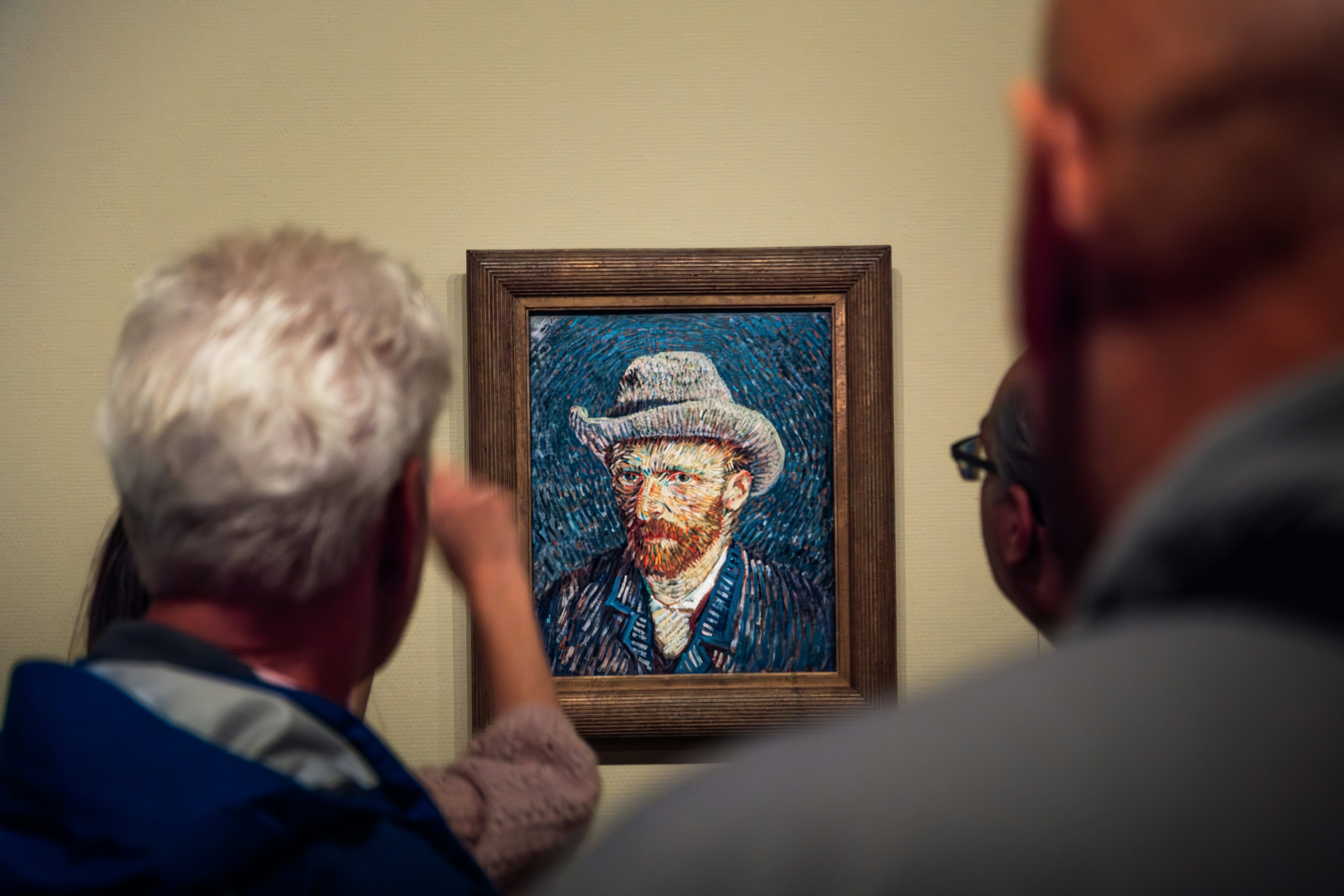
The 30 best countries, cities and regions to visit in 2025

Apr 22, 2025 • 4 min read

Will it be the grand Rijksmuseum, or the all-Vincent Van Gogh Museum? Shutterstock (2)
In between bicycling all over, cruising around the canals and raising a pint or three at a historic bruin café, visitors to Amsterdam will find a trove of fantastic museums.
And two institutions in the Dutch capital tower above the rest: the monumental Rijksmuseum, the Netherlands’ showpiece museum, crammed with treasures spanning more than eight centuries; and the Van Gogh Museum, which contains the world’s largest collection of works by the Dutch Post-Impressionist Vincent van Gogh.
Both rank in the top tier of museums in all of Europe, yet couldn’t differ more in their collections, architecture and experience for visitors. While we’d recommend spending several days exploring every gallery in both, we realize most visitors don’t have the luxury of time
So if we had to recommend just one to visit, which would we pick? Read on as we explain the ins and outs of both the Rijksmuseum and the Van Gogh Museum.

The Rijksmuseum displays a dazzling collection of artworks, from medieval icons to Asian works to 20th-century pieces (and, yes, even a ). Yet the undisputed main attraction here is the superb, almost overwhelming, collection of paintings and objects from the 17th-century Dutch Golden Age.
In the central , visitors marvel at Rembrandt’s colossal , as well as other superb canvases by the master, such as and . Four of Vermeer’s 34 surviving works hang here, including and . Rounding out the survey are paintings by Jan Steen, Jacob van Ruisdael and other famous artists, plus blue-and-white Delftware pottery, intricate dollhouse, sumptuous furniture and furnishings, and much more.

By contrast, the Van Gogh Museum – a modern affair, built in the 1970s and expanded with additions in 1999 and 2015 – offers a deep dive into the mind, soul and extraordinary body of work of one brilliant and troubled artist. The galleries cover his artistic beginnings in the Netherlands and follow to his prolific stint in southern France, where he painted with fervent brushstrokes and vibrant colors.
Chronologically arranged hang some are some 200 Van Gogh paintings (, , , , , ...) and 500 drawings. You'll also find works by his peers (Gauguin, Toulouse-Lautrec, Monet et al), as well as 700 handwritten letters that provide an intimate glimpse into his close relationship with his younger brother, Theo, Vincent’s most ardent supporter.

The museums are adjacent to each other at Museumplein, a vast, grassy expanse in central Amsterdam around 10 minutes’ walk from the lively nightlife hub of Leidseplein and a similar distance to the leafy Vondelpark (great for a post-museum picnic).
The Rijksmuseum’s size and the scale of its collections – some 8000 pieces are displayed at a time from a total collection of over one million works – means you’ll need plenty of time here. Allow at least four to five hours to do it justice.
At the Van Gogh Museum, visits typically take around two hours, though aficionados will want to stay longer.

The Rijksmuseum occupies a magnificent late-19th-century building that’s a mélange of neo-Gothic and Renaissance elements. (The original architect, Pierre Cuypers, also designed Amsterdam’s ornate Centraal Station.) Outside, the gardens, with roses, fountains, hedges and even a greenhouse, double as an outdoor sculpture gallery. The museum has an august air that befits its scope, size and national importance – yet lively wall texts, friendly staff, a and other amenities make any visitor feel welcome, no matter their art-historical knowledge.
The history of the Van Gogh Museum is far more personal. Vincent died in 1890 – aged just 37, having only sold one painting in his lifetime – and left his body of work to his brother Theo (who died the following year). The extraordinary collection remained in the Van Gogh family and later a foundation, with the government ultimately creating a dedicated museum to display it, which opened in 1973. This family connection remains apparent today, especially through the moving letters and personal effects that complement the paintings.
We recommend visiting either museum first thing in the morning or late in the afternoon, and on a weekday, to experience them at their (relative) calmest. Buying a timed ticket in advance will help avoid disappointment at the entrance.

The two museums are both so stupendous, and so different, that we declare a tie.
If you’re an art-history nerd and fan of the Dutch masters, the Rijksmuseum is simply an essential stop. Its collections bring Dutch history to life, and provide visual context as to why this tiny country has made such an impact on the world. It’s especially exciting to take in the depictions of Amsterdam’s canals, churches and houses that hang on the walls – and see how little has changed over 400 years in this one-of-a-kind city.
But who can resist the colors and emotions of Van Gogh? The chance to soak up so many masterpieces by the artist in one go is irresistible – and, given the family’s history and stewardship of the collection, emotionally powerful, too.
If you visit no attractions in Amsterdam other than these two fantastic institutions, you will have enjoyed a full visit indeed.